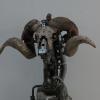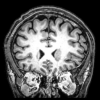henylalanine
DL-phenylalanine (DLPA)
D-phenylalanine
L-phenylalanine
Phenylalanine helps create the neurotransmitters — chiefly norepinephrine, epinephrine or adrenalin, and dopamine — that produce mental arousal, alertness, and a better emotional state. It is often used by those attending raves.
Food sources: Almonds, aspartame (NutraSweet), beef, black beans, chicken, cottage cheese, dairy products, eggs, fish, lima beans, milk, nuts, peanuts, pumpkin and sesame seeds, soybeans, sunflower seeds, watercress. Plants contain mostly the "D" form, while animal products contain mostly the "L" form.
Effects: Phenylalanine may contribute to a more positive mental state, alertness, more motivation and ambition, more energy, an increase in learning ability, better memory, and an increased ability to focus and pay attention. (Leon Chaitow, N.D., D.O., claims on the "D" form produces these beneficial results, while Mark Mayell claims that the "L" form stimulates the nervous system and libido, enhances mood and cognition, and suppresses the appetite, whereas the "D" form elevates mood and enhances memory, and DLPA combines the effects of both.) It may help counter jet lag when taken first thing in the morning or right after a long flight, as it helps regulate the body's biological clock. It is believed that DLPA activates the morphine-like endorphins in the body, hormones which act as painkillers.
One study has shown that a significant percentage of individuals suffering from depression exhibited rapid improvements in mood when given 500 mg/day of L-phenylalanine (which was gradually increased to 3 to 4 g/day), along with 100 to 200 mg a day of vitamin B-6 to facilitate the effects of the amino acid. Another study showed significant improvements in those with depression when 250 mg of L-phenylalanine was combined with 5 to 10 mg of Eldepryl. In combination with B-6, it produces the compound phenylethyalmine (PEA), which may elevate mood based on its action as a neurotransmitter. There is some evidence that, in combination with other substances, phenylalanine can help suppress addictive behavior and cravings, but there is no evidence that is suppresses appetite or enhances libido.
A deficiency can result in mood swings, weight gain, and problems with blood circulation.
Precautions: It should not be taken by those with pigmented malignant melanoma cancer, phenylketonuria (or PKU, a genetic metabolic disorder), psychosis, or Wilson's disease (otherwise known as hepatolenticular degeneration, a rare hereditary disease chiefly characterized by a toxic buildup of copper in the organs and tissues of the body). Likewise, those taking MAO-inhibitor drugs should avoid phenylalanine, as should pregnant or lactating women. Early studies seem to indicate that phenylalanine and tyrosine encourages growth of melanomas (skin cancers — one of the most deadliest forms of cancer), and doctors usually have patients restrict their intake of these amino acids. Those with high blood pressue should only take it under the guidance of a health professional.
Some warn that the daily dosage should not exceed 2.4 grams a day. Too much phenylalanine can result in over-stimulation, nervousness, heart palpitations, high blood pressure, and irritability; if taken later in the day, it may cause insomnia. Mayell says these symptoms only occur with the "L" form, and can be avoided by reducing the dosage, switching to DLPA, or taking it only in the morning. Other symptoms include headaches and nausea.
Dosage: The RDA has not been established. It is recommended that both "D" and "L" forms be used, especially in the treatment of depression or for increased energy. A dose for 1000 to 1500 mg of DLPA may be taken in the morning without food; a second dose may be taken later in the day, this time with 100 mg of B-6, 500 mg of vitamin C, and some fruit or fruit juice to help convert the amino acid to norepinephrine. Hendler, M.D., Ph.D., recommends no more than 1.5 g/day, with 20 to 30 mg/day of vitamin B-6 (not to exceed more than 50 mg/day). Mayell advocates a more modest dose of 375 to 500 mg of the "L" form or 750 to 1000 mg of DLPA, first thing in the morning at least 30 minutes before breakfast.
Chaitow, Leon, ND, DO. The Healing Power of Amino Acids. Wellingborough, England: Thorsons Publishing Group, 1989.
Mayell, Mark. Natural Energy. New York: Three Rivers Press, 1998.
Hendler, Sheldon Saul, MD, PhD. The Doctor's Vitamin and Mineral Encyclopedia. New York: Simon and Schuster, 1990.
Encyclopedia of Mind Enhancing Foods, Drugs and Nutritional Substances (David W. Group, 2000), Minor edits made by me (continuity).
http://freakshare.co....-2000.pdf.html


Depression-Free, Naturally (Joan Mathews-Larson, 1999)
http://books.google....yWfIIC&pg=PA185
The above book points out a few pages prior that symptoms indicating low norepinephrine include: lethargy, fatigue, sleeping too much, and feelings of immobility. (http://books.google....yWfIIC&pg=PA180)
Additionally, Ester C may be poor. Another form of vitamin C should be used. http://vitamincfound....org/esterc.htm


























































